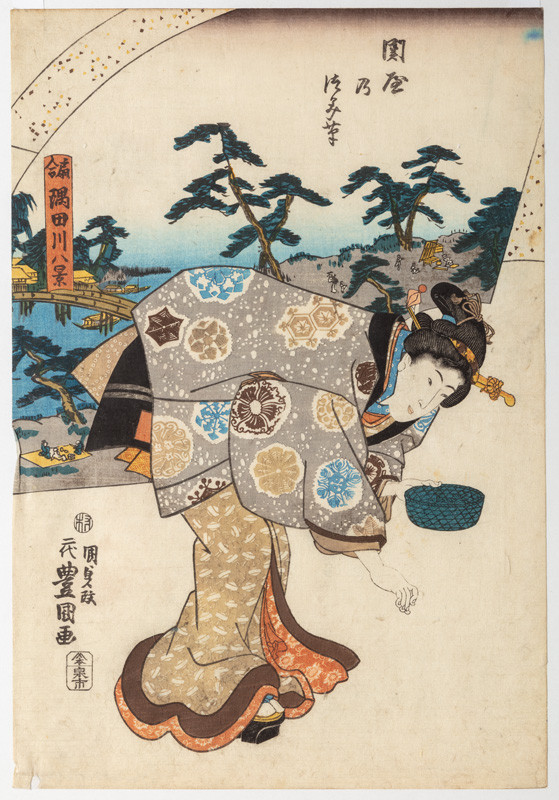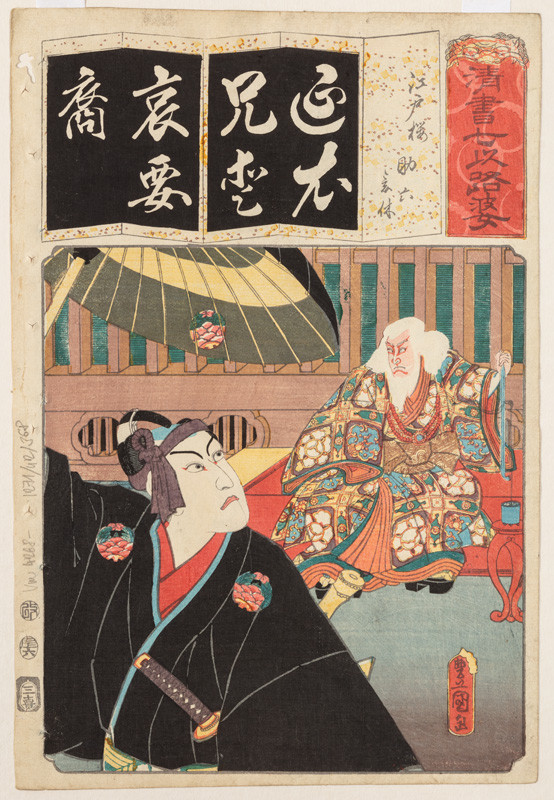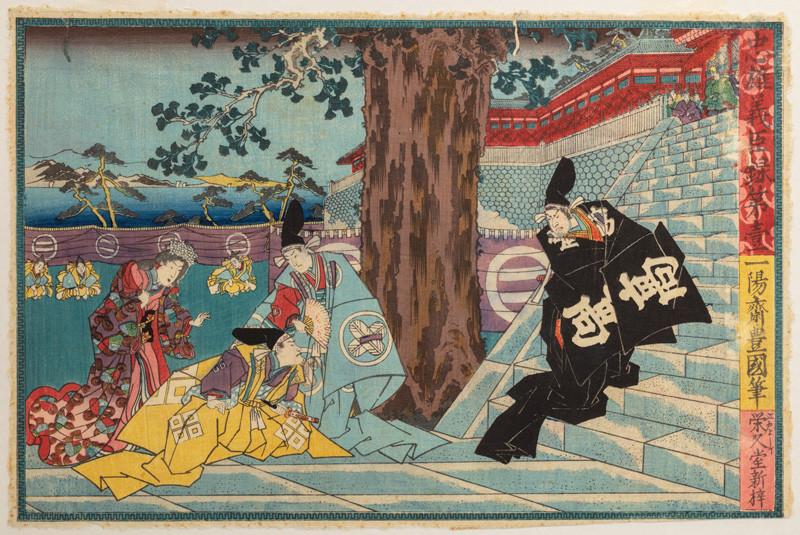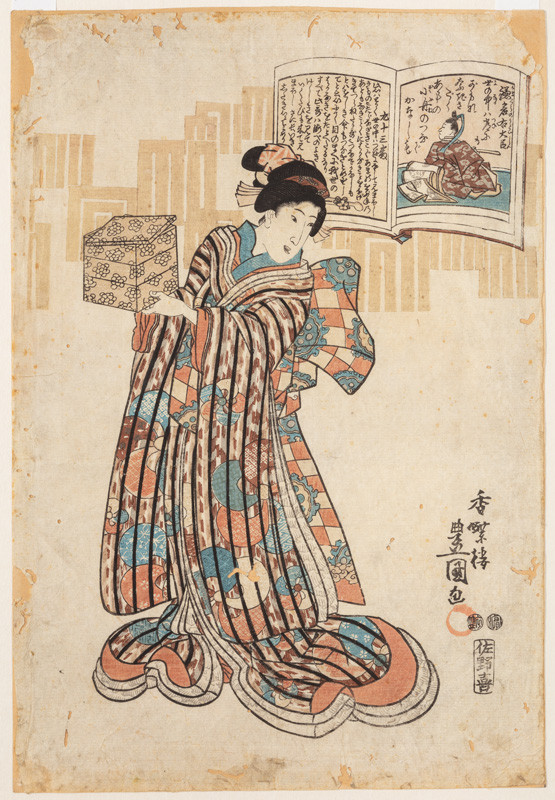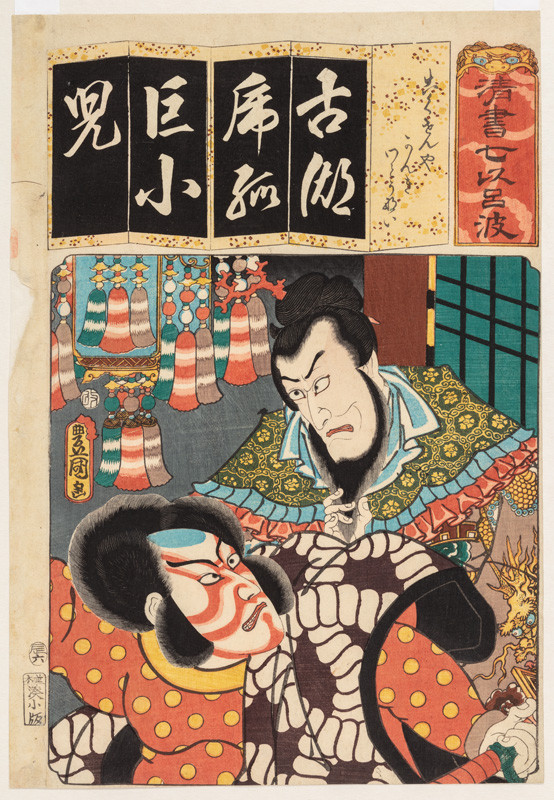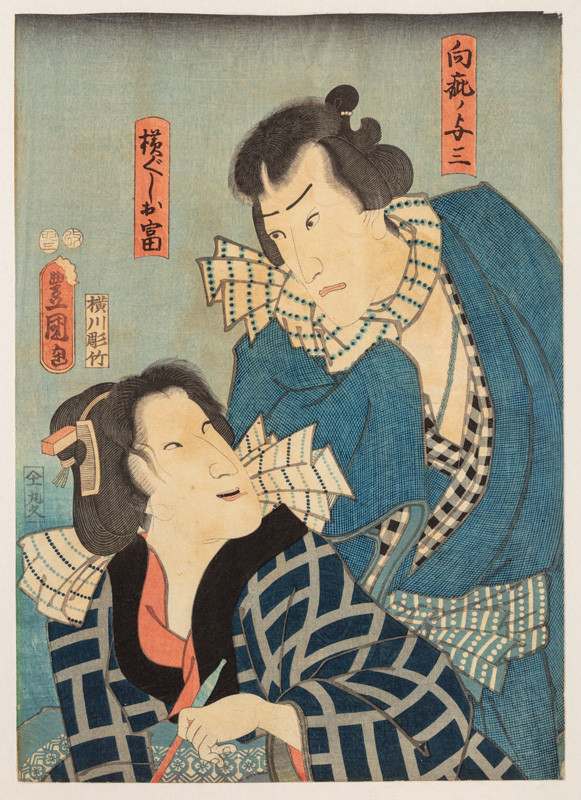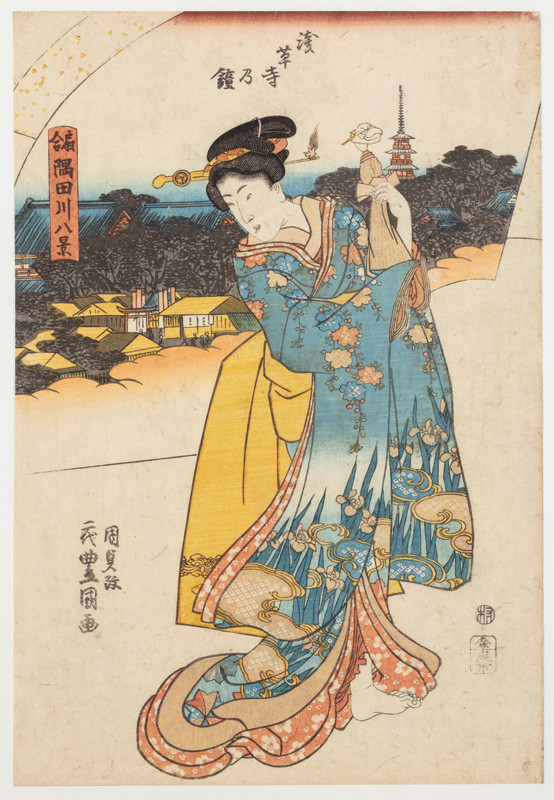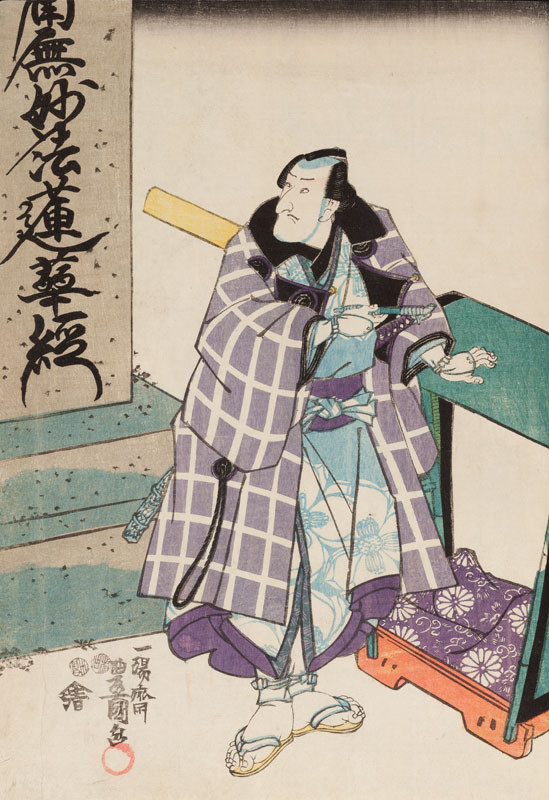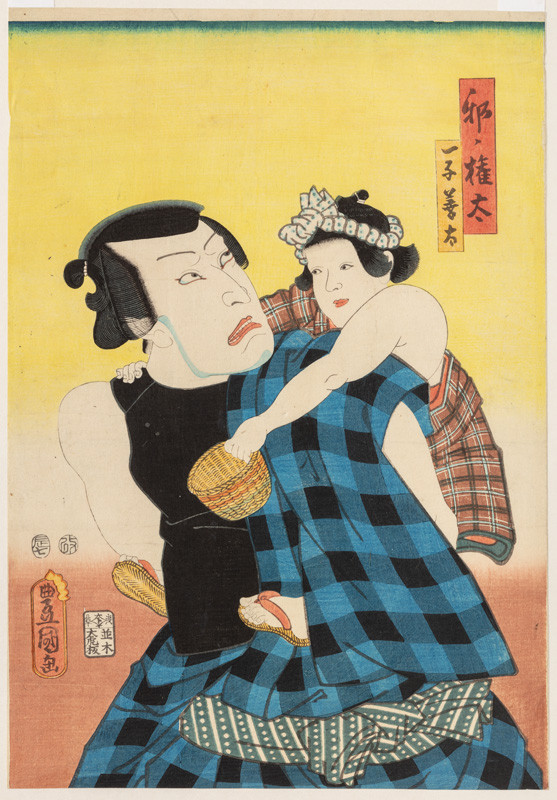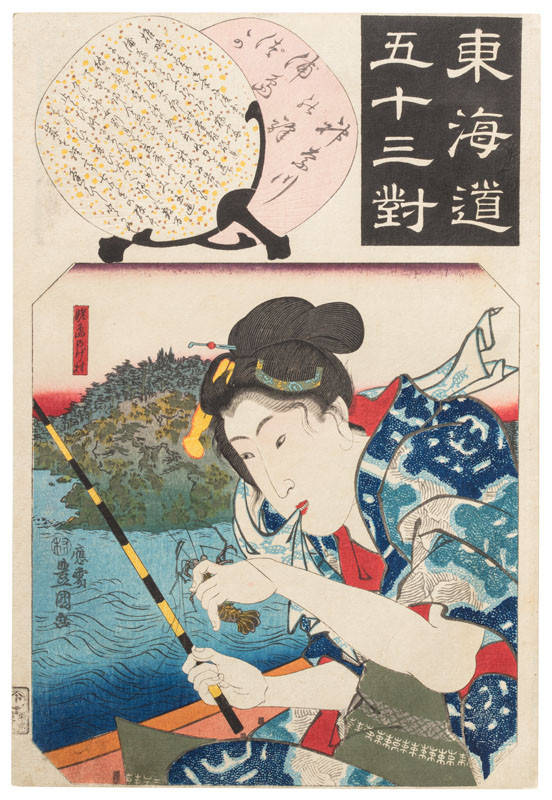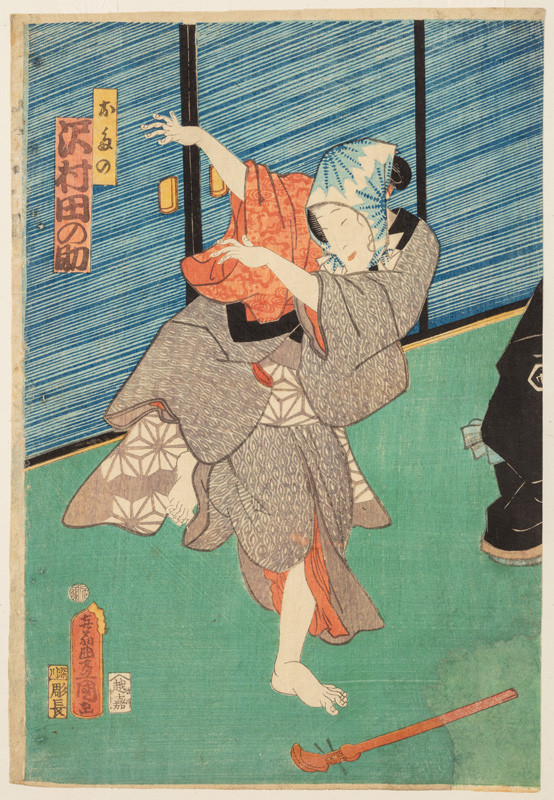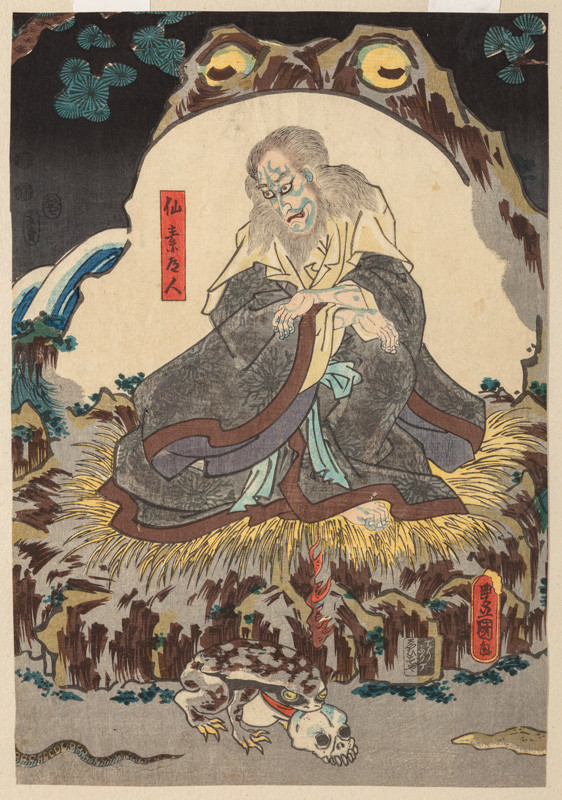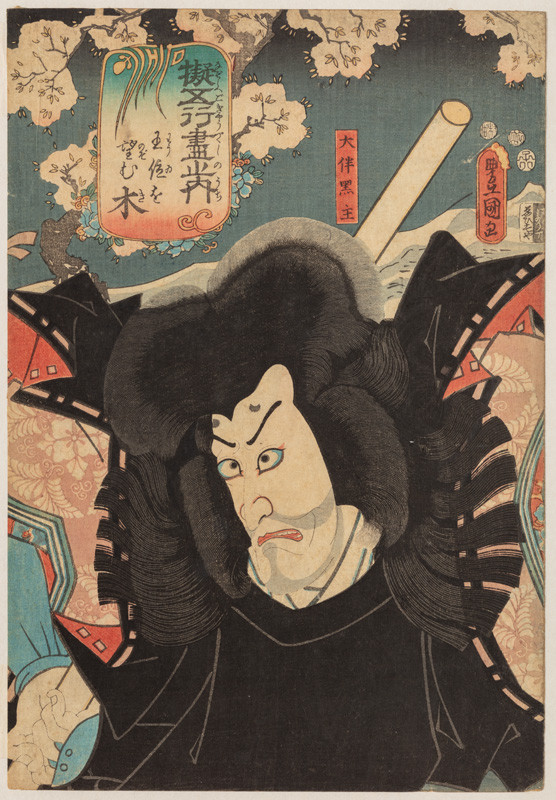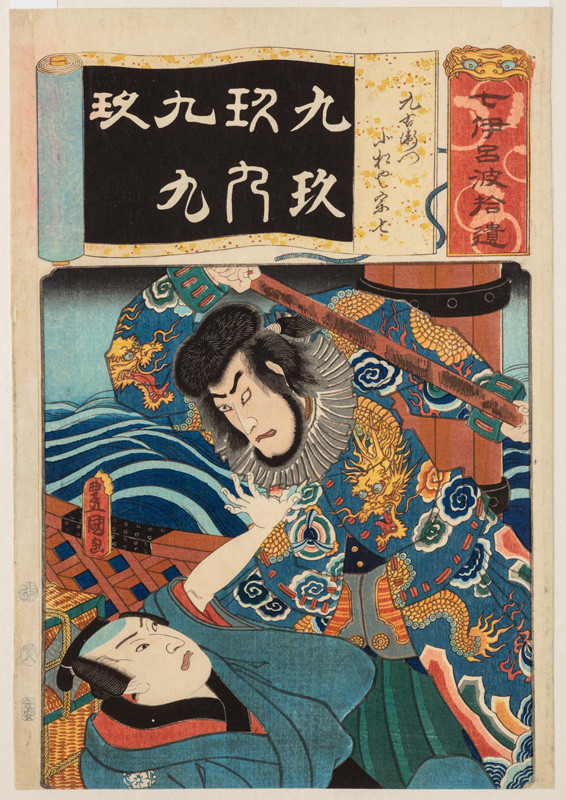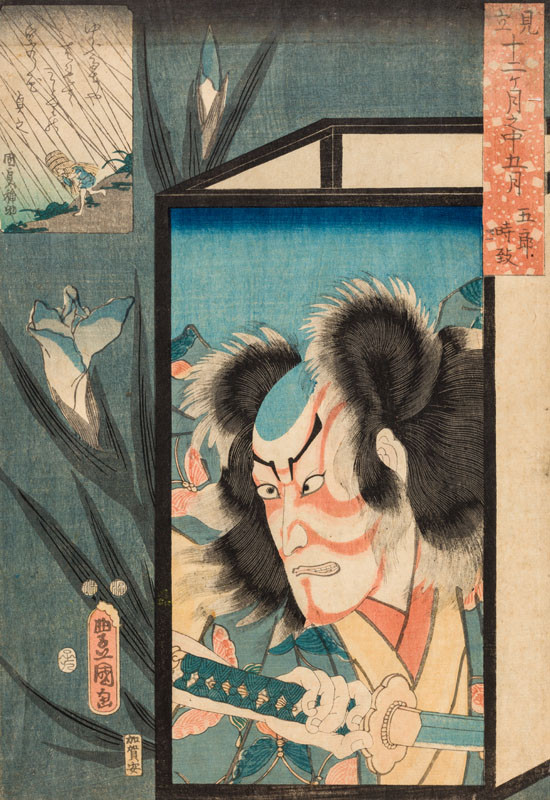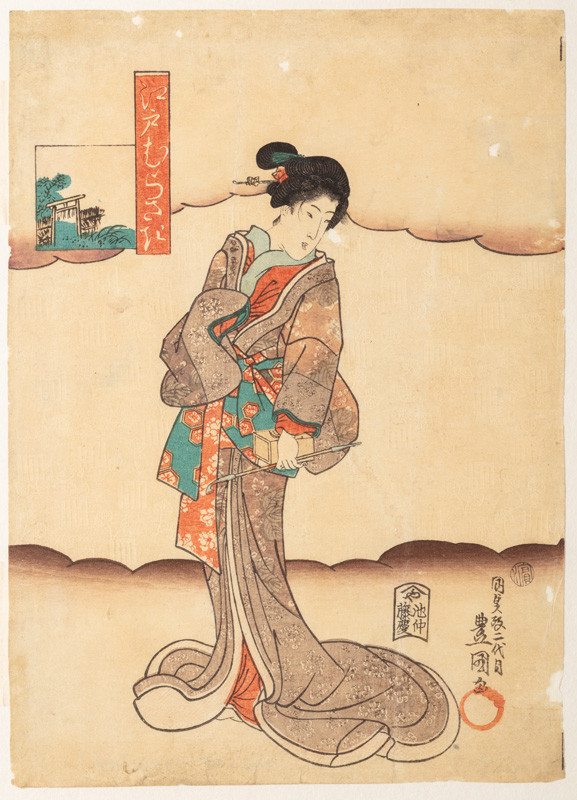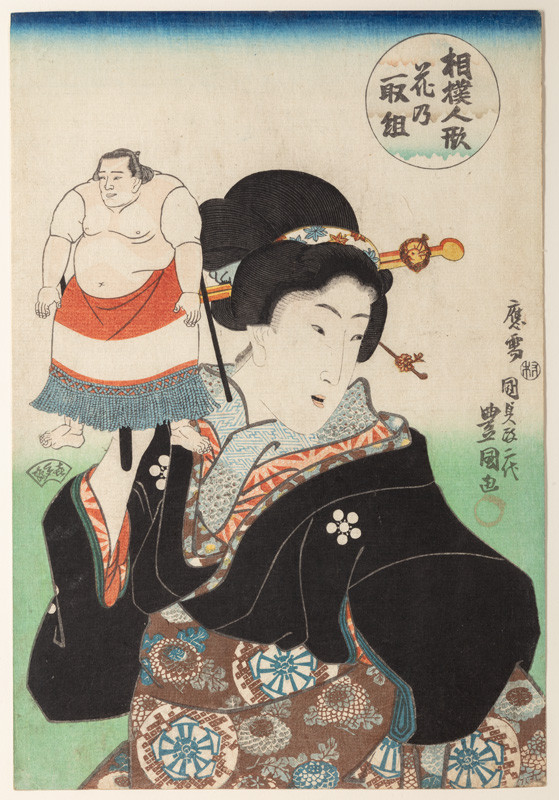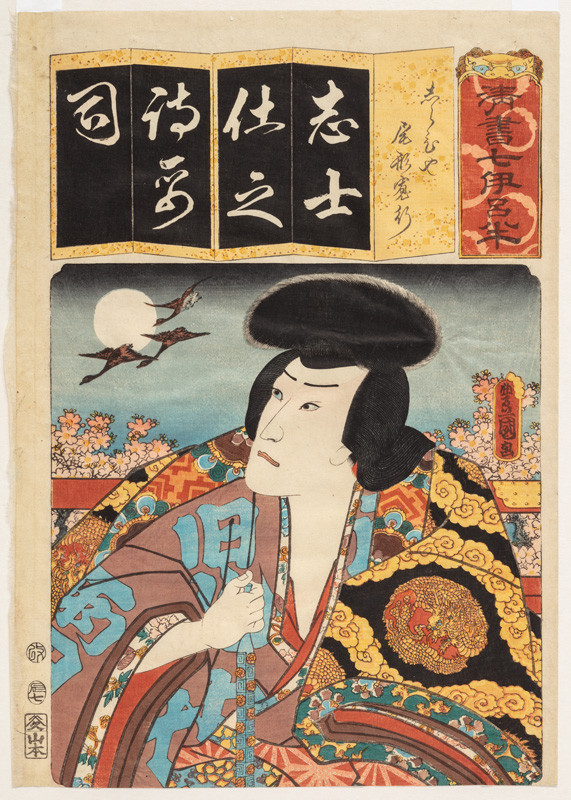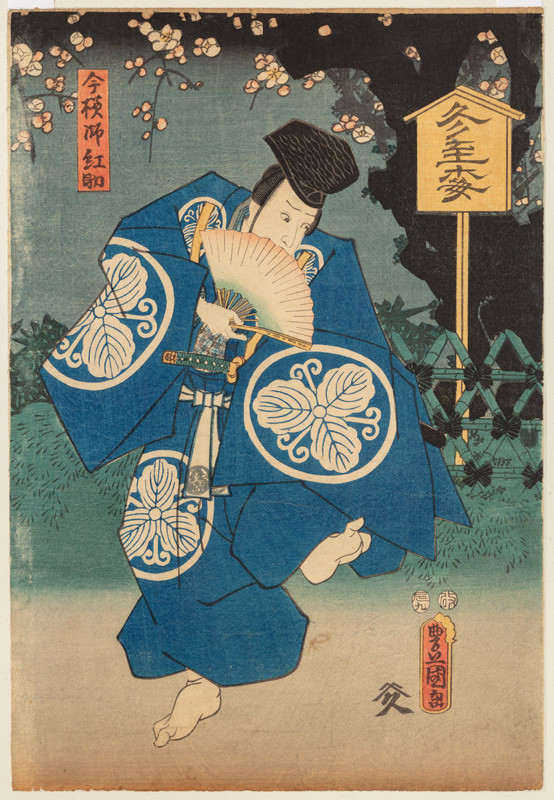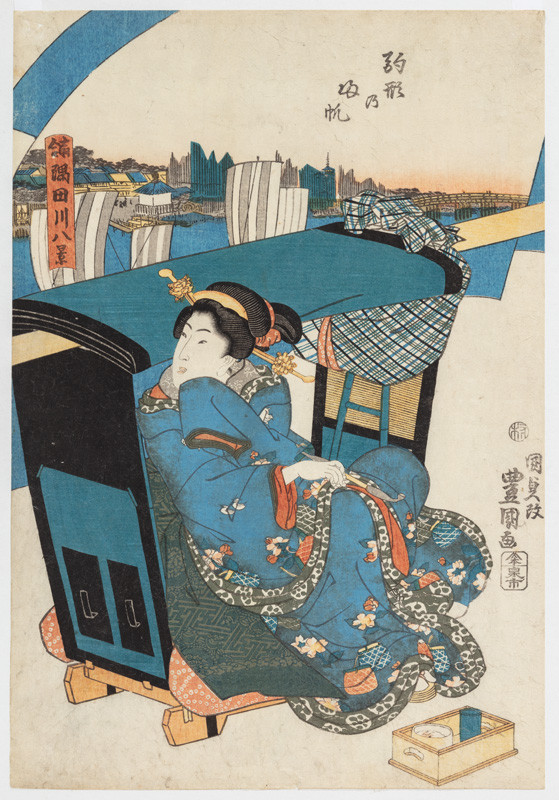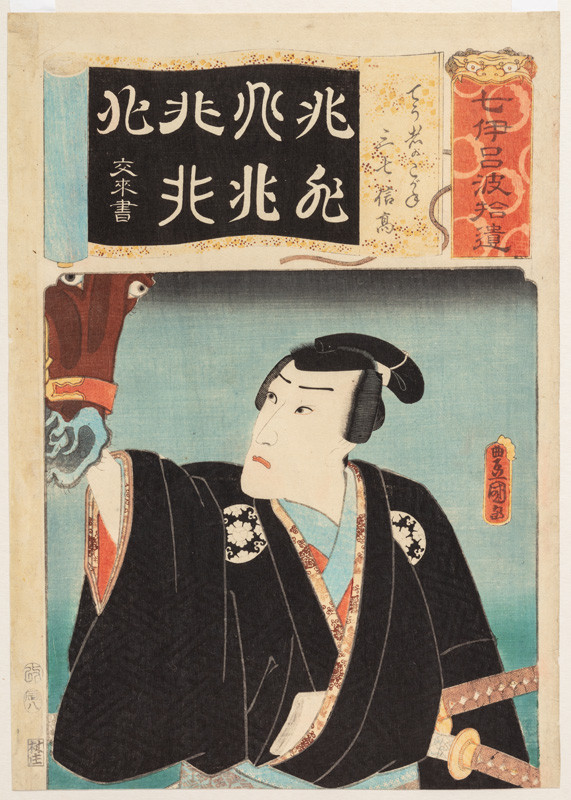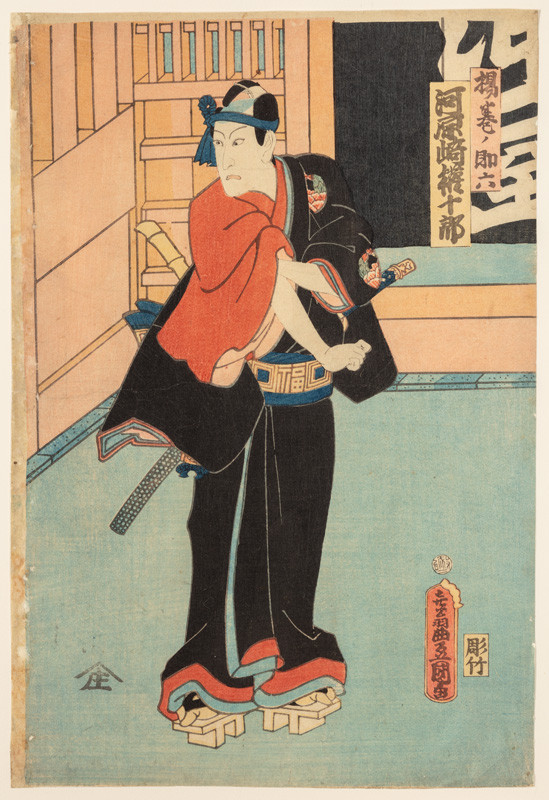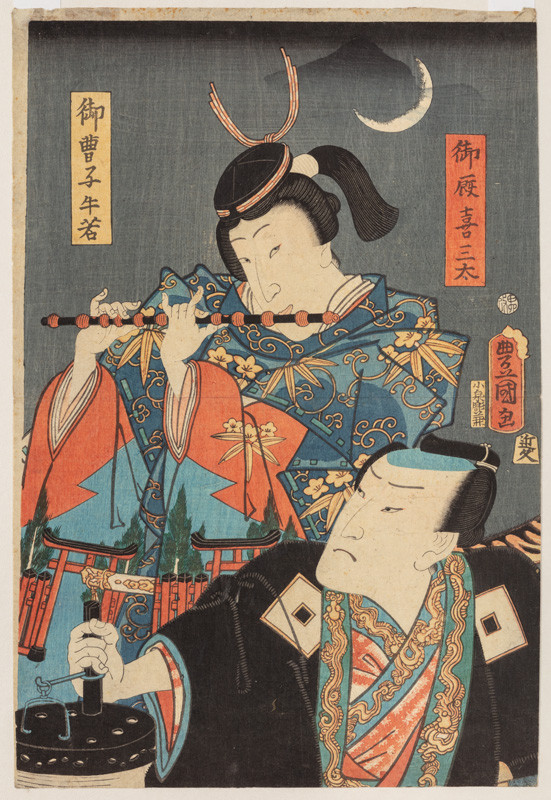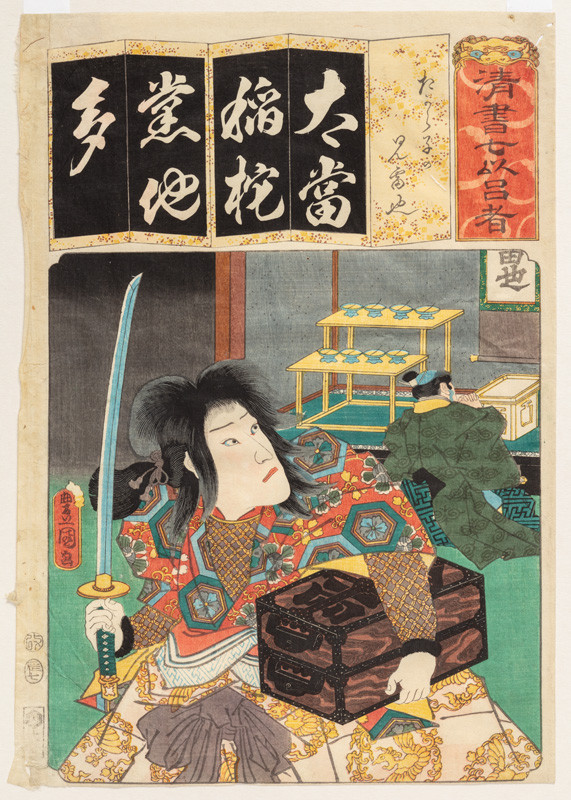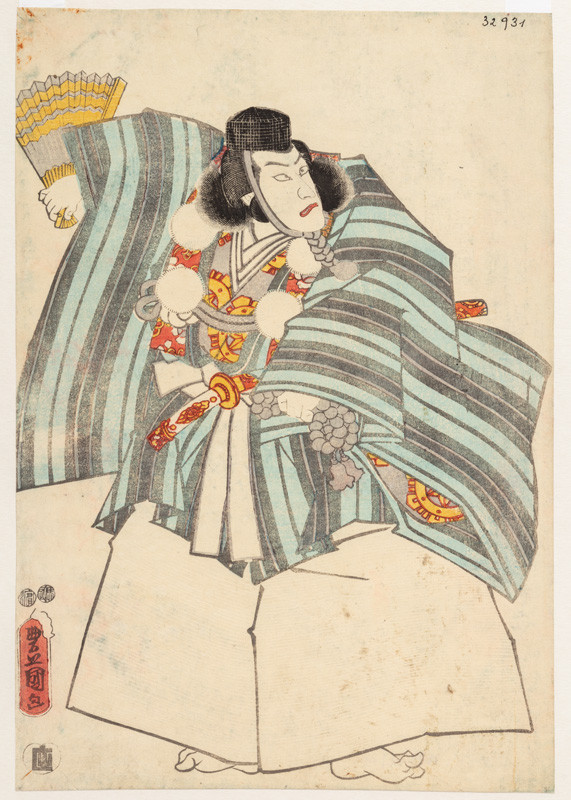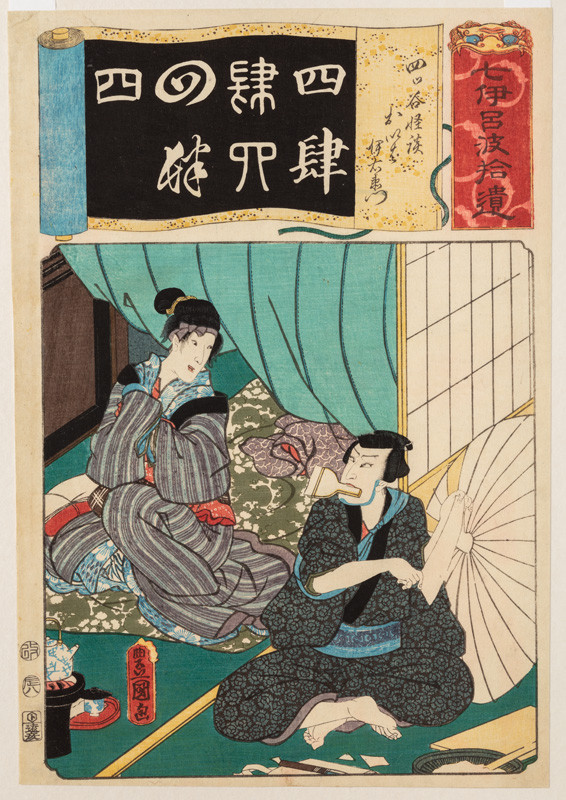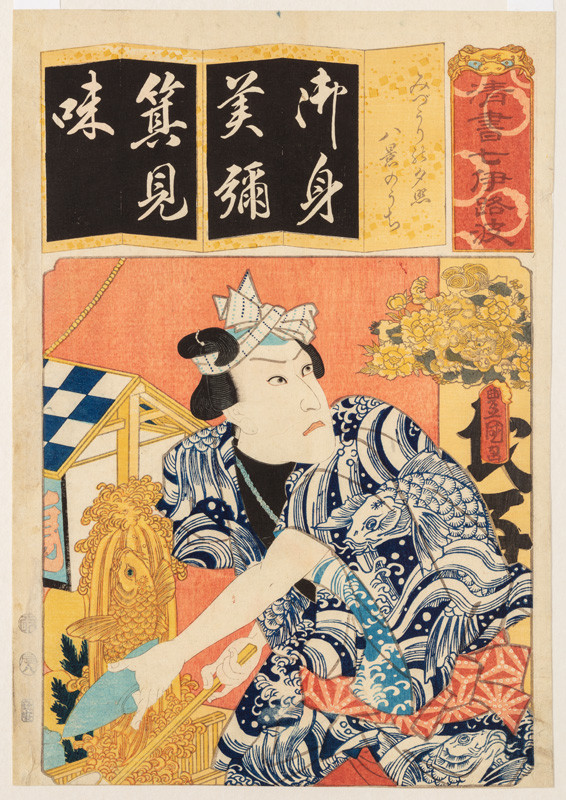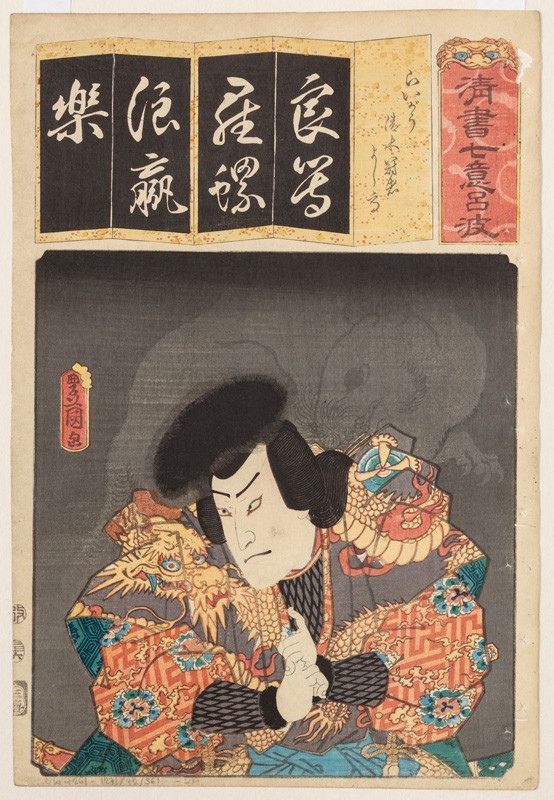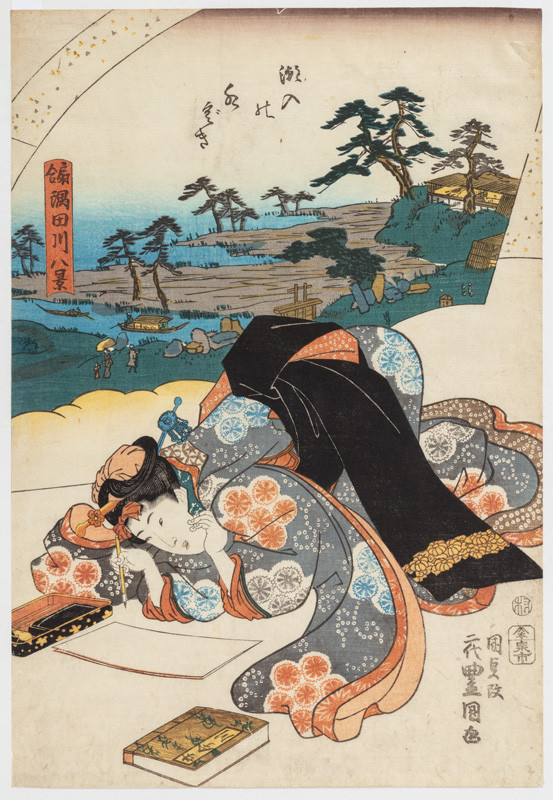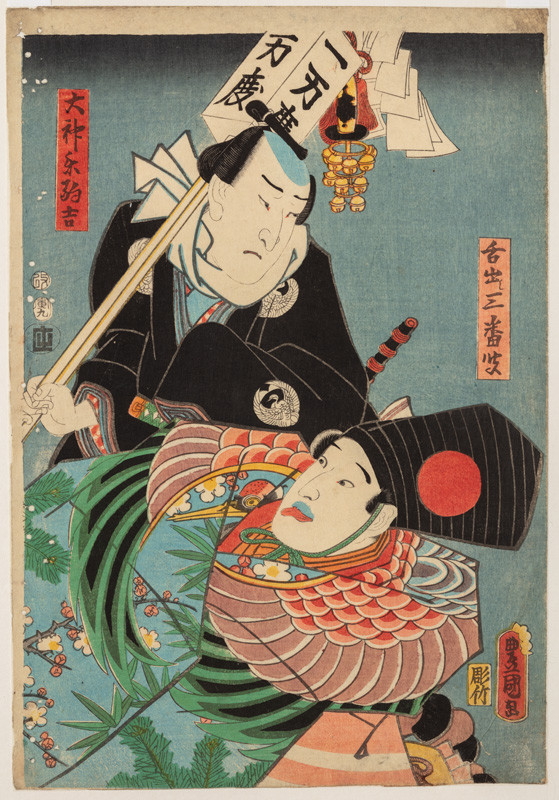
The ceremonial dance-drama (shosagoto) Shitadashi Sambasō (literally ”Sambasō with a stuck-out tongue”) had its premiere in the 9th month of 1812 in the Nakamuraza Theatre with the Ōsaka-based guest actor Utaemon III, who took this opportunity to say goodbye to the audience in Edo and show the Ōsaka dancing tradition in the style of Nakamura Nakazō I (1736–1790). The music was composed by Kyōto-based Kineya Shōjirō I and the text of the accompanying recitation and occasional singing (kakeai) in the nagauta and kiyomoto styles was written by Sakurada Jinsuke II based on the lyrics of the old Nō play Okina. Like in the Nō theatre, the drama was performed with a large pine tree in the stage background. From then on, Nō-derived dramas were called matsubame mono (plays with a pine tree on the stage). The old man Okina, a symbol of longevity, danced with a black mask in choreography imitating ancient ritual shamanic dancing, which ensured a good harvest and long-lasting well-being and good health for the tribe. Two figures dance in this drama – the female dancer Senzai, with crane feathers on the shoulders of her costume, and the male dancer Sambasō, who raises his big toe and sticks out his red-coloured tongue at the peak moment of his mie pose. This grimace was also common for negative characters in non-dance-dramas, e.g. Shōhei sticks out his tongue in the Kurumabiki scene in the drama Sugawara denju tenarai kagami. Dance-dramas like Sambasō were seen as a beneficial beginning of the year cycle, which is why they were performed on New Year’s Day in the morning, when only knowledgeable spectators, passionate lovers and kabuki connoisseurs went to the theatre. (See Helena Honcoopová, Kunisada, Praha 2005, p. 208)

